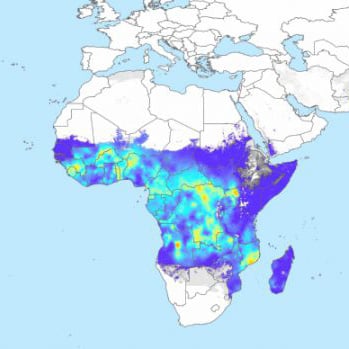Search

Research
Child Health Analytics Research ProgramListed are all Telethon Kids Institute research teams involved in our Child Health Analytics Research Program. This program sits under the Brain and Behaviour research theme.
Research
The Vector AtlasThe Vector Atlas aims to update and create vector species maps and spatial products that improve disease prediction, mitigation and preparedness.
Research
Expanding Tidy Data Principles to Facilitate Missing Data Exploration, Visualization and Assessment of ImputationsDespite the large body of research on missing value distributions and imputation, there is comparatively little literature with a focus on how to make it easy to handle, explore, and impute missing values in data. This paper addresses this gap. The new methodology builds upon tidy data principles, with the goal of integrating missing value handling as a key part of data analysis workflows.
Research
COVID-19 vaccine coverage targets to inform reopening plans in a low incidence settingSince the emergence of SARS-CoV-2 in 2019 through to mid-2021, much of the Australian population lived in a COVID-19-free environment. This followed the broadly successful implementation of a strong suppression strategy, including international border closures. With the availability of COVID-19 vaccines in early 2021, the national government sought to transition from a state of minimal incidence and strong suppression activities to one of high vaccine coverage and reduced restrictions but with still-manageable transmission.

The Infectious Disease Ecology and Modelling team led by Professor Nick Golding, combines mathematical and statistical modelling, ecology, and public health to address malaria and other infectious and vector-borne diseases. The team uses modelling and maps to measure the risk posed by some of the world’s most important and neglected diseases – including malaria, Japanese Encephalitis Virus and Covid-19 – and provide rapid modelling analyses to policy makers.
Research
Forecasting COVID-19 activity in Australia to support pandemic response: May to October 2020As of January 2021, Australia had effectively controlled local transmission of COVID-19 despite a steady influx of imported cases and several local, but contained, outbreaks in 2020. Throughout 2020, state and territory public health responses were informed by weekly situational reports that included an ensemble forecast of daily COVID-19 cases for each jurisdiction.
